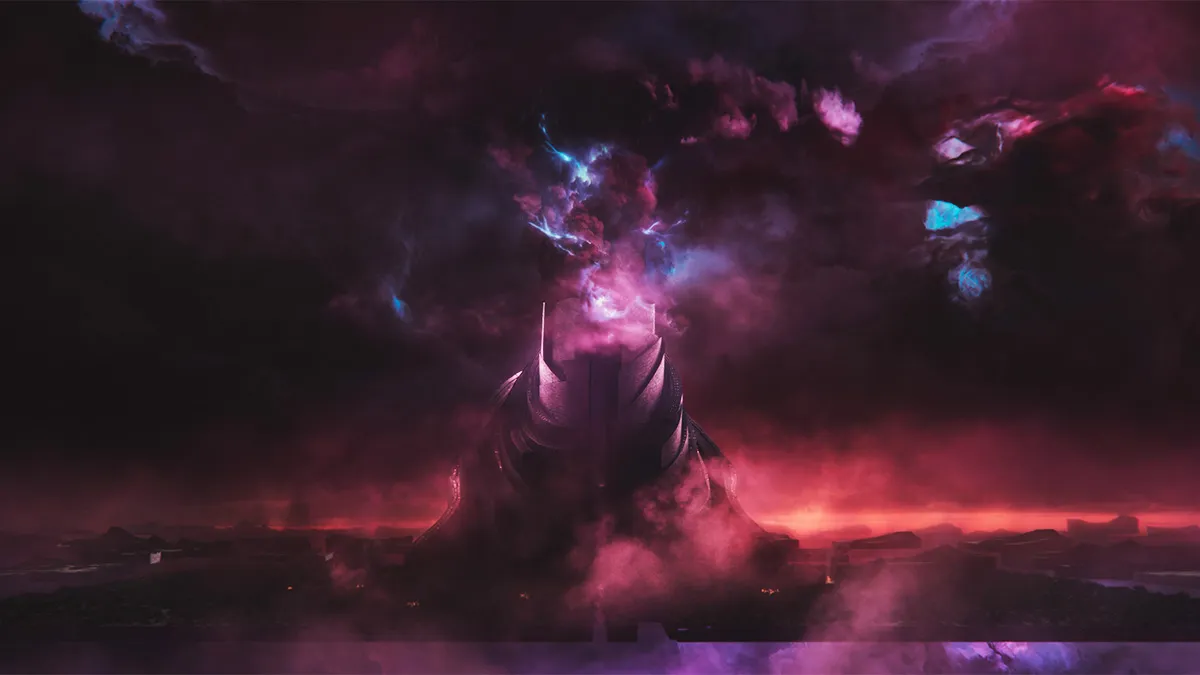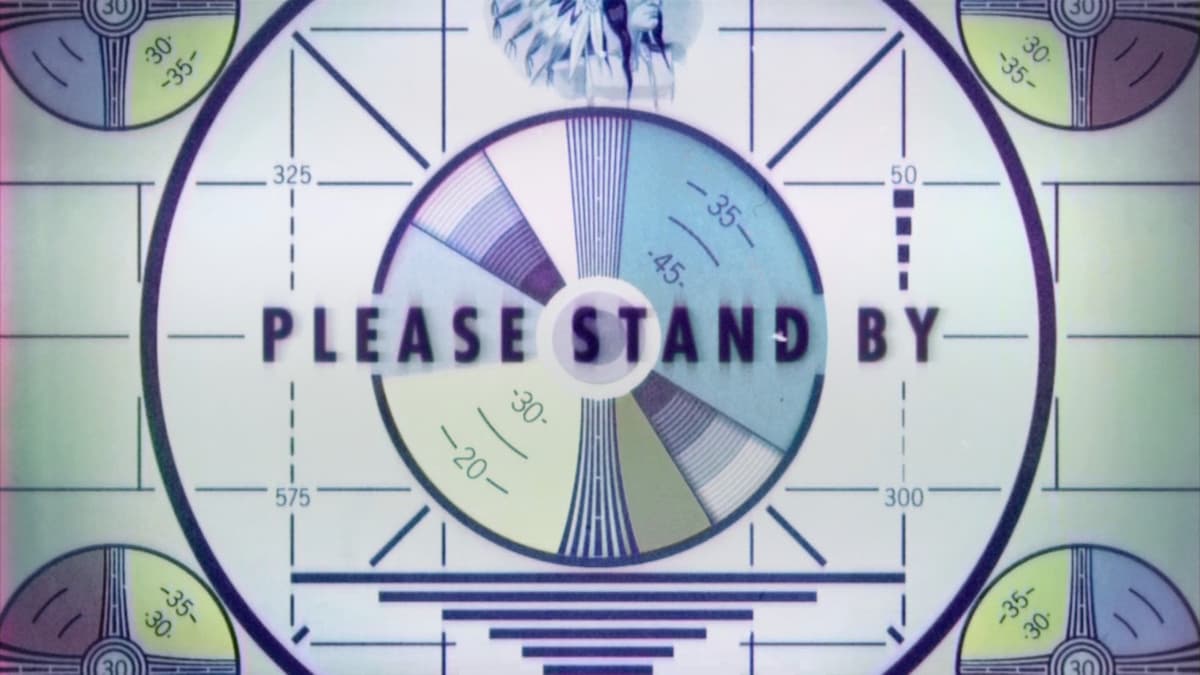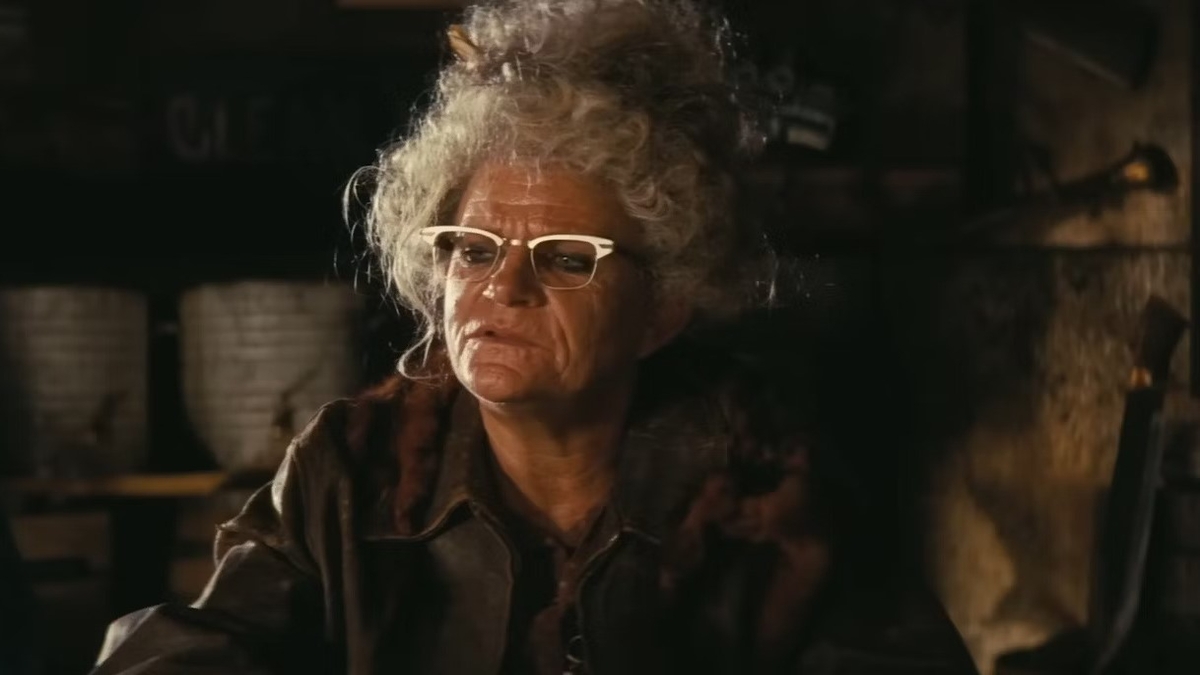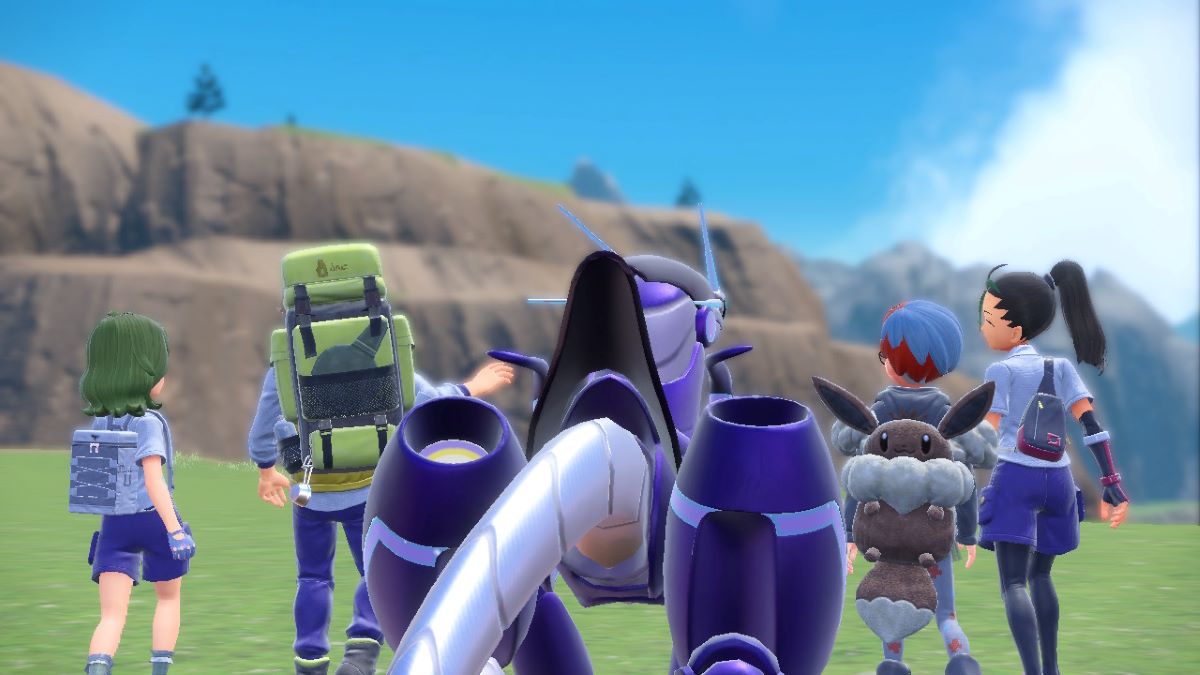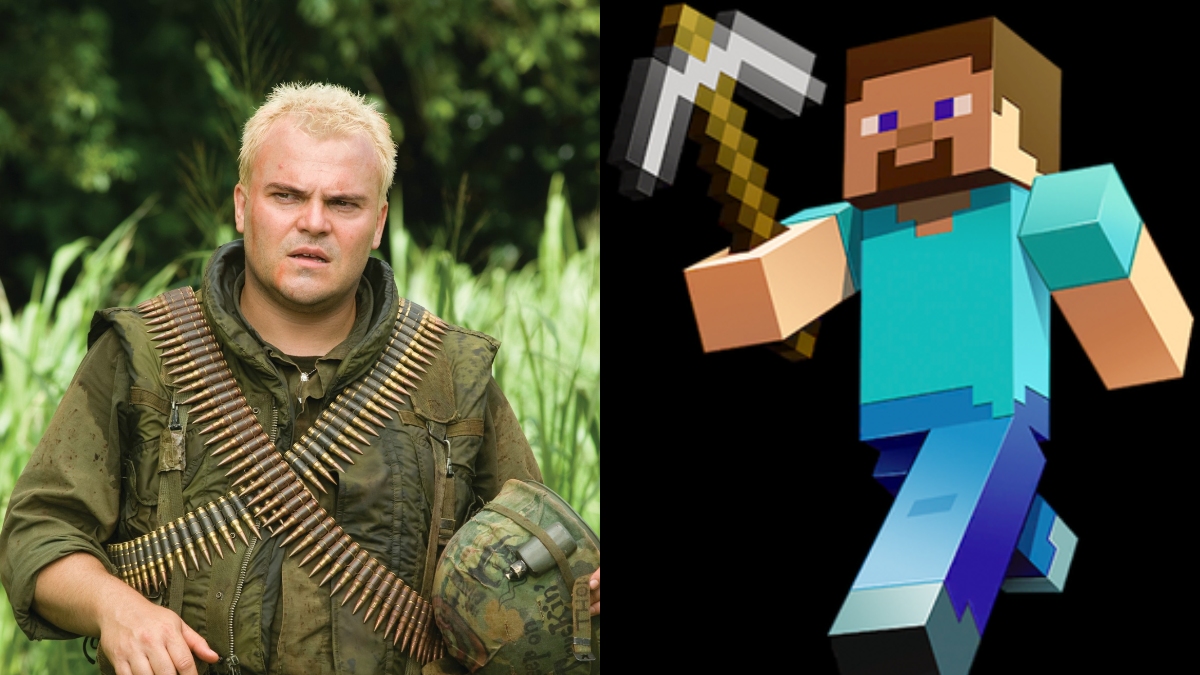The last semi-final match of the 2016 SMITE World Championships has just started. The reigning champion, NA team Cloud9, is taking on EU superstar Epsilon. I’m standing in the tournament press room with our GS weekend editor, QuintLyn Bowers, and chatting with some streamers about who we’re rooting for.
But I’m only half-focused on the conversation — I’m fifteen minutes away from a last-minute interview with Todd Harris, the COO and co-founder of Hi-Rez. And I don’t have a single question. I’m still wracking my brain for something to say when the PR coordinator comes over to let QuintLyn and I know that Todd is ready to go. We gather our things and meet him in one corner of the press room.
Harris greets us warmly, and we arrange three chairs so that we’re halfway facing each other, and halfway facing the wall-mounted screens that are broadcasting the match.
As we sit down and get ourselves situated, I’m still half-wondering how I ended up here. A week ago, I was just a SMITE fan who sometimes wrote about competitive events. Last year, I was streaming SWC 2015 from my desk, in my pajamas. How did I end up a member of the press, sitting across from the guy who helped start it all?
From Point-of-Sales Systems to Game Development
When QuintLyn kicks things off with her first question, it immediately feels less like an interview and more like a conversation. Harris remarks that this February will mark Hi-Rez’s eleventh year in the video game industry. Then he tells us a little bit about the roundabout path he and his co-founder, Erez Goren, took to game development. Harris taught himself computer programming in junior high with the aspiration of making games, while Goren was developing games for the Atari 2600.
TH: “…then the video game industry crashed, and then separately [Erez Goren] and I both kind of entered the business software world. And the point of sale company that I mentioned…was very successful. We did well. It earned him a lot of money, so he basically became self-made millionaire that way. And after about 20 years in doing business software, we kind of woke up one day and remembered that the reason we did all that was to have enough money to make video games.
So, where he could have actually retired at that point, he turned to me and said, “hey, I think I want to start a video game company. Do you want to do this?” It was pretty risky, honestly — I mean, just changing career paths that late in life. But we were fortunate because we did have good investment from him. It wasn’t like “okay, if we don’t make it in year one, we’re dead.” And that helped.
Harris and Goren knew a number of talented programmers, and asked the best of the best to join them in the creation of Hi-Rez.
TH: “So we started with being just a really good software development crew, and then we had to learn more of the art side, the design side…”
Photo from the SMITE launch tournament in 2014
We talk a little bit about how much of a learning experience it has been for Hi-Rez to go from being a small, indie developer to a publisher with its own eSports circuit. They both seemed very much like learn-as-you-go experiences.
TH: “The first fifteen years were just learning how to be a software developer. Then it was about seven years to learn how to be a game developer. Then, maybe another two years to learn not just to be a game developer but a game publisher — with marketing, and PR, and buying ads. But then, over the last two years, not just being a developer and publisher, but also a developer and publisher that runs eSports — which means not just events, but running a league and getting casters and getting admins and getting production and hosts, like Kelly.”
From the very start, Hi-Rez has handled its own eSports circuit. In the past, they’ve worked with partners like MLG and ESL — especially in regions like Australia and Latin America, where they don’t have offices. QuintLyn points out that other developers seems to be catching on to the fact that running their own leagues is the way to go. Blizzard/Activision just bought MLG, and Riot has been taking back its competitive league to make it a more in-house circuit.
Harris’ answer is a mantra that will permeate the rest of the interview:
TH: “…we do work with partners when it makes sense, but from a strategy standpoint, because we’re so community-focused, and that’s really our main goal. I actually think of us as being in the online community and content business, and games are a part of that.
What we’re really doing is building an online community at the end of the day. That’s how I think about our mission. So whenever possible, we like to be involved. That means we do it ourselves. We might work with a partner like MLG or ESL, but we’re still involved. We don’t just hand it off.”
The SMITE World Championship 2016. It’s gotten bigger, to say the least.
Building a strong community
As Harris is talking about community building, I’m thinking back to media day at the Hi-Rez headquarters and the opening ceremony on Day 1 of SWC. I’d heard so many developers and personalities express astonishment at how they’d ended up working with the studio of their dreams.
I ask Harris to estimate how much of the studio’s infrastructure comes directly from the community. He has to take a moment to consider.
TH: “Well, I mean even just employees, we’ve hired I’d say 30 or more people. And that’s just a rough guess. It’s probably more — it could very easily be more. It’s probably more. But easily, there are 30 full-time people working basically on a volunteer basis just out of passion. I’m sure it’s more than that.
I could look at nearly any part of SWC and find Hi-Rez staff who, like me, were just really passionate community members a year ago. Their stories, like mine, started with “I just really liked SMITE…” We shared a disbelief that our passion for one game had taken us all the way to the Worlds stage.
TH: “I mean, Adam who runs our eSports, was a competitive Tribes player. Kelly was a streamer. Lil MamaCita was a Tribes player. Rory (DryBear) was a YouTuber. PonPon was a competitive player — he does Q&A for us. Alex — who’s in here doing press stuff — had a SMITE community website. Josh…was a streamer and a huge Tribes player.
I’m sure it’d be much more than 30, but I can conservatively say 30.”
Ten years ago today I joined HiRez Studios when it was a tiny little start up. Proud to see how far we’ve come. It’s been one wild ride.
— Sean McBride (@HirezSean) January 5, 2016
But Hi-Rez isn’t just looking to its community for talent. Harris also works very closely with local schools to help foster growing talent at the high school and college level. He’s advised the curriculum at locations like the Savannah College of Art & Design, Gwinnett Tech, Georgia Tech, and the Art Institute. Now, he’s turning his attention to helping high schools get STEM-certified.
In addition to working with local schools, Hi-Rez also sponsors meetups and works with local artists to facilitate workshops on subjects like photography, figure drawing, and designing with Unity. When QuintLyn notes that a number of Hi-Rez employees attend the figure-drawing workshops, Harris jokes that he’s sure they only go for the nudity.
Local programs aren’t the only resource that Hi-Rez produces for its community. The studio also makes videos to help passionate gamers learn how they can get into the game development industry. QuintLyn and I agree that this is almost a strange thing for a developer to do, given how secretive other AAA devs tend to be about it.
TH: “That’s the sort of stuff, honestly, where it does help the community, and it also benefits us. Because at the end of the day, if we produce stuff that people actually seek out, and it’s not advertising — that’s the best form of advertising. So if we can produce content like that, that’s just legitimately valuable, some percentage of those folks will discover Hi-Rez newly through that…
It’s a lot of the reason we do those whacky videos we do. Number One, just trying to be transparent with the community. To keep the community light. But Number Two, it’s good marketing. It’s like an ad without being an ad.”
Community, community, community. The mantra surfaces again. I ask Harris if he thinks any of SMITE‘s success could be attributed to the openness and transparency of Hi-Rez as a studio.
TH: “The game deserves most of the credit, but our relationship with the community does deserve a lot of the credit as well. Because, it’s just a different way for people to discover us and stay longer with the community. Being smaller, even though we’re successful, we would not be successful if we tried to out-Blizzard Blizzard or out-Riot Riot. They just have their lane, and they do things that way, and we need to compete on our strengths. And are strengths are working with the community and being transparent — not taking ourselves too seriously. I think it helps.”
Not taking themselves too seriously makes for a congenial attitude at events like SWC. QuintLyn mentions that a friend of hers was shocked by how friendly everyone at Hi-Rez was. I’m nodding enthusiastically as she says this, glad to know that I wasn’t the only one who got taken by surprise — I certainly hadn’t expected to be received so warmly (or to get so many hugs) as press for such a large event.
But I’m increasingly getting the sense that no one is a stranger at Hi-Rez — if you share their passion, you’re as much a part of the community as anyone else. Exhibit A is the casual nature of this interview. I would have been just as much at ease talking over drinks. QuintLyn wonders out loud of that inviting attitude has anything to do with Southern hospitality, given that the studio calls Alpharetta, GA home.
Harris seems taken aback, and admits that he’s never been asked that question before. He talks about growing up in North Carolina, and I briefly connect with him over sharing the same home state. Finally, he decides that there may be something to the question:
TH: “Maybe there’s a little Southern hospitality in there.
I honestly think, I mean we keep coming back to it. But when you’re part of a company where everyone’s talking about community all the time, then it’s like that. I think some companies are set up to be a little more Ivory Tower around their development process. So their artists are visionaries that are not to be disturbed…and it kind of gets passed down on tablets to players who enjoy it. I don’t think we have that much ego, because we need the community to like us enough to give us feedback on the game. So, it’s more of a joint process.”
Changing the relationship between fans & devs
We just can’t seem to escape the community talk. I tell him that the Hi-Rez approach to community relations is refreshing to see, especially in the face of a growing distrust between gamers and developers.
Harris says that now isn’t the easiest time to be a developer. We agree but add that it isn’t really the easiest time to be a player or a fan either. Broken games, outright lies, and shady business have left a lot of gamers disenchanted. Harris takes the opportunity to elaborate on his previous comment, explaining that there’s a growing burden placed on developers as the industry takes off.
TH: “But that said, games are the biggest media form on the planet these days. So, we’re doing something right, but we’re given even more responsibility to do even better. But it’s exciting just to be a part of that industry that is producing and commenting on the mass media of our time.”
I point out that in addition to becoming more globalized, the games industry is one of the few media outlets that is globalizing its audience in return. Multiplayer games and eSports circuits are creating international competition as they grow and expand.
TH: “Right. And it’s such a meritocracy — independent of gender, race, religion, language, whatever. I mean, we compete by region just so they can talk to each other and have servers with good ping. Then we come together and compete on the world stage. And something like that is so cool to be a part of.”
The SMITE player base is as varied as its pantheons.
With the conversation veering back to eSports, QuintLyn brings up the recent decision to cap prizes in the SMITE competitive circuit. Hi-Rez put a limit on grand prize amounts for pro events, so that they could better distribute extra prize money between lower-ranked teams and smaller events. It seems like a slight to the players, but Harris says that it will be beneficial to everyone in the long run.
TH: “The philosophy is try to help the players with a more regular, and predictable income…We raise a lot of the money through sponsorships, through the sale of in-game items…when we limited the prize pool, there wasn’t too much controversy because we actually asked the teams. Every team, other than maybe C9…it was almost unanimous opinion that that was a better approach.”
Harris trails off, and we pause to watch a brawl play out in the Cloud9 vs. Epsilon game. The whole room is focused on the screens, and cheers erupt when Epsilon lands a beautiful kill. The passion and excitement for the game is palpable.
A labor of love
When we return to the interview, I only have one question left for Harris. Hi-Rez had just launched its Out-Of-The-Blue update for Tribes: Ascend, an IP with a devoted fanbase that was abandoned for years while Hi-Rez worked on SMITE. Many fans considered this an egregious black smudge on Hi-Rez’s record. I wanted to know how such a riled community received the update.
TH: “The first word would be positive, I would say…Sean did an amazing job working with the community.
But the patch was not to make money. It was not really even to get new users. It was to work with that community and try to address some grievances, some things that we weren’t happy with around how we left it, and to leave it in a better state.
…if you look at the Reddit — which is never a place of extreme positivity — in general, it’s pretty complimentary. I think the goals that we had were met, and Sean’s just going to keep working with the community on what’s next.”
Harris is referring to Sean McBride, the creative director on the small team that’s working with Tribes. I remember him from his presentation on media day. Shawn’s journey to developing, like so many others at Hi-Rez, began with “I just really liked Tribes…” And once the formalities of his presentation had finished, he was content to gush about the game until Harris had to nudge him off stage.
Harris explains that the update was a scary undertaking, but one that Hi-Rez tackled nonetheless.
TH: “…for a company that wants to be community-oriented, it’s kind of like a blemish. And they’re a really tough community. But we wanted to give it a shot.”
We all agree that gamers are a tough crowd in general — a very passionate group. But Harris believes we only hate because we love.
As we wrap up the interview, Harris is hoping to find his family and watch the next match. His only closing comment is about how awesome the whole event has been.
“The best part,” he says, “has been meeting all the fans.”
We’d like to thank Todd Harris for taking the time to do an interview with us. To keep up with all the insider information from Hi-Rez, you can follow him @ToddAlanHarris on Twitter. Or subscribe to the SMITE channel on YouTube to watch all of Hi-Rez’s hilarious and helpful community videos.
And remember to stay tuned to GameSkinny as we move into Season 3 of SMITE. We’ll keep you updated on all the latest news and event coverage as this season kicks off.






